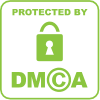In computer the recycle bin is temporary storage for files that have been deleted in a file manager by the user, but not yet permanently erased from the file system. Typically, a recycle bin is presented as a special file directory to the user (whether or not it is actually a single directory depends on the implementation), allowing the user to browse deleted files, undelete those that were deleted by mistake, or delete them permanently (either one by one, or by the "Empty Recycle Bin" function).
Microsoft's Recycle Bin is implemented as a special folder with columns like Date deleted and Original location. Typically only files deleted via Windows Explorer (but not necessarily other Windows graphical interfaces such as file selection dialogs) will be put into the Recycle Bin; files deleted via the Command Prompt are permanently deleted, as (by default) are files deleted via operating system APIs and applications other than Windows Explorer. Some operating system APIs do, however, allow applications to recycle files rather than delete them. In previous Windows operating systems and in MS-DOS, undeletion was the only way to recover accidentally or intentionally deleted files.
The Recycle Bin only stores files deleted from hard drives, not from removable media, such as memory cards, thumb drives, or floppy disks. Nor does it store files deleted from network drives.
The Recycle Bin has a setting to configure the amount of deleted files it can store. Free disk space allocated for this is not actually used until files are deleted from folders and stored in the Recycle Bin. In versions of Windows prior to Windows Vista, the default configuration of the Recycle Bin is a global setting for all drives to hold 10% of the total capacity of each host hard drive volume to store deleted files. For example, on a volume with a capacity of 20 gigabytes, the Recycle Bin will hold up to 2 gigabytes of deleted files. This can be changed anywhere from 0 to 100% of the drive space, but will not be allowed to exceed 3.99GB of space, even if the user-indicated % of the drive space is larger than 3.99GB. If the Recycle Bin fills up to maximum capacity, the oldest files will be deleted in order to accommodate the newly deleted files. If a file is too large for the Recycle Bin, the user will be prompted to immediately and permanently delete the file instead. This 3.99GB limit does not apply in Windows Vista and later Windows versions.[citation needed]
The actual location of the Recycle Bin depends on the type of operating system and file system. On older FAT file systems (typically Windows 98 and prior), it is located in Drive:\RECYCLED. In the NTFS filesystem (Windows 2000, XP, NT) it is Drive:\RECYCLER. On Windows Vista and Windows 7 it is Drive:\$Recycle.Bin folder.
The Recycle Bin can be accessed from the desktop or Windows Explorer.
In Windows Explorer, files are moved to the Recycle Bin in a number of ways:
- By right-clicking on a file and selecting delete from the menu
- Selecting the file and pressing the delete key
- Selecting delete from the Task pane in Windows XP
- Selecting the file and choosing delete from the File menu (in Windows XP Explorer)
- By dragging and dropping a file into the Recycle Bin icon
- From the Send To menu
- From a context menu command or some other function in a software application (usually configurable)
It is possible to bypass the Recycle Bin and directly delete a file by holding the SHIFT key while performing an action that would normally send a file to the trash
- Click Start / Run
- Type regedit and press enter
- Open the HKEY_CLASSES_ROOT folder
- Open the CLSID folder
- Open the {645FF040-5081-101B-9F08-00AA002F954E} folder
- Open the ShellFolder folder
- Change the "Attributes" data value from "40 01 00 20" to "50 01 00 20". Once
completed change the "CallForAttributes" dword value to "0x00000000" (doubleclick
and change value data to 0). You must change both of these values to get the
rename to appear.
After performing the above steps you will be able to rename the icon like any other
icon. Right-click the Recycle Bin icon on the desktop and click Rename and rename it
to whatever you wish.
Hope You Like My Article And Found It Useful Keep Like And Comment If you have any problem













0 comments